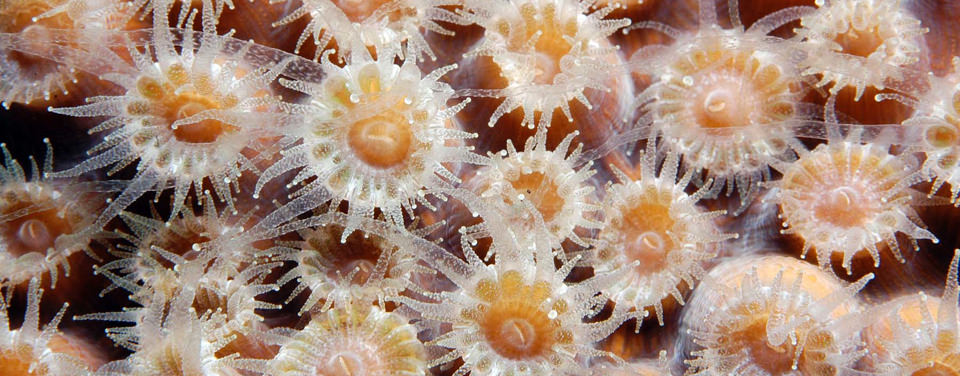What is a coral reef made of?
A coral reef is made of thin layers of calcium carbonate

Coral polyps form a living mat over a calcium carbonate skeleton.
Stony corals (or scleractinians) are the corals primarily responsible for laying the foundations of, and building up, reef structures. Massive reef structures are formed when each individual stony coral organism—or polyp—secretes a skeleton of calcium carbonate.
Most stony corals have very small polyps, averaging one to three millimeters (0.04 to 0.12 inches) in diameter, but entire colonies can grow very large and weigh several tons. These colonies consist of millions of polyps that grow on top of the limestone remains of former colonies, eventually forming massive reefs.
In general, massive corals tend to grow slowly, increasing in size from 0.5 to two centimeters (0.2 to 0.8 inches) per year. However, under favorable conditions (lots of light, consistent temperature, moderate wave action), some species can grow as much as 4.5 centimeters (1.8 inches) per year.